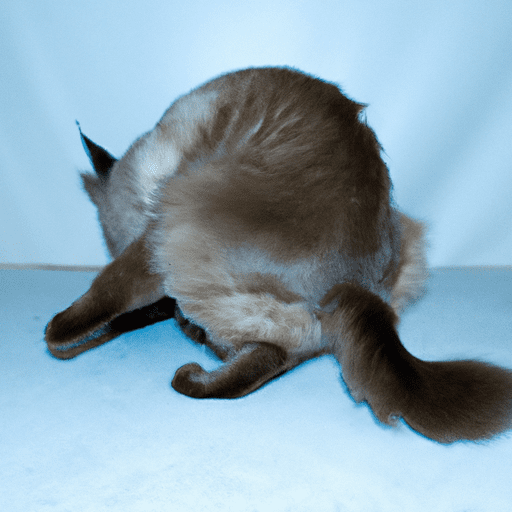In “Cat Aggression: Understanding And Managing It,” you will discover valuable insights into the world of cat behavior. Whether you are a new cat owner or have been caring for feline companions for years, understanding aggression in cats is crucial for maintaining a harmonious and safe environment. This article aims to provide you with a deeper understanding of common triggers for cat aggression and practical tips on how to manage it effectively. By exploring the underlying causes and implementing appropriate strategies, you can foster a peaceful coexistence with your furry friend.
What Causes Cat Aggression
Cats are generally known for their independent and aloof nature, but aggression can still be a common issue that owners face. Understanding the causes of cat aggression is crucial in helping you manage and prevent aggressive behavior in your feline companion. There are several different factors that can contribute to cat aggression, including territorial aggression, fear aggression, redirected aggression, and play aggression.
Territorial Aggression
Territorial aggression in cats is often triggered by the need to protect their territory from intruders, including other cats or even humans. Cats are highly territorial creatures and can become aggressive when they feel threatened or perceive a potential threat to their territory. This aggression can manifest through behaviors such as hissing, growling, and even physical attacks.
Fear Aggression
Fear aggression in cats occurs when they feel threatened or scared in certain situations or around specific stimuli. Cats may lash out defensively when they feel trapped or cornered, and their aggression is a means of self-protection. Signs of fear aggression may include hissing, swatting, and even biting.
Redirected Aggression
Redirected aggression occurs when a cat is unable to release their frustration or aggression towards the intended source, so they redirect it towards something or someone else. This can happen when a cat becomes agitated by a perceived threat, such as seeing another cat through a window, and then turns their aggression towards a nearby person or pet. This form of aggression can be unpredictable and intense, often resulting in scratching or biting.
Play Aggression
Play aggression is a common behavior in kittens and young cats. While it may seem harmless, play aggression can escalate and become too rough or intense, causing harm to humans or other pets. Cats may engage in play aggression by biting, scratching, and pouncing on their playmates. It’s important to understand the difference between play aggression and true aggression, as the latter can be problematic and requires intervention.
Signs of Aggressive Behavior in Cats
Recognizing the signs of aggressive behavior in cats is crucial for early intervention and management. While some cats may exhibit more subtle signs, others may display clear indications of aggression. Knowing what to look for can help you address the issue and seek appropriate solutions.
Growling and Hissing
Growling and hissing are common vocalizations displayed by aggressive cats. They are defensive behaviors aimed at intimidating or warding off potential threats. When a cat growls or hisses, it’s a clear indication that they are feeling threatened and may become aggressive if the situation escalates.
Swatting and Scratching
Swatting and scratching are physical manifestations of aggression in cats. These behaviors often occur when a cat feels cornered or is defending their territory. Cats may swat with their paws, aiming to strike their target, or they may use their claws to scratch, causing potential injury.
Biting
Biting is a more severe form of aggression and can cause significant harm. Cats may bite when they feel trapped, threatened, or overwhelmed. The bite can be a warning sign before more aggressive actions follow, or it may be an immediate response to a perceived threat.
Tail Twitching
Tail twitching is a commonly observed behavior in aggressive cats. When a cat’s tail twitches vigorously, it indicates that they are highly aroused, and their aggression may escalate. It’s essential to be aware of this body language and take appropriate action to prevent further aggression.
Understanding Territorial Aggression
Territorial aggression is a common form of aggression in cats, often rooted in their instinctual need to protect their territory. Understanding the nature of territorial aggression is crucial in effectively managing and addressing this behavior.
Defining Territorial Aggression
Territorial aggression occurs when a cat feels the need to defend its living space from perceived intruders. This aggression is usually directed towards other cats but can also extend to humans or other animals. Cats are known for their need for personal space and may feel threatened when their boundaries are challenged.
Causes of Territorial Aggression
Territorial aggression can be triggered by various factors, including the presence of other cats in the vicinity, changes in the home environment, or even the addition of new family members. Cats may also become aggressive towards strangers or visitors, as they perceive them as invading their territory.
Recognizing and Managing Territorial Aggression
Recognizing signs of territorial aggression is crucial in managing and preventing aggressive episodes. If your cat displays signs such as growling, hissing, or physically attacking intruders, it’s essential to provide them with a safe and secure space where they can retreat. Gradual introductions and proper socialization with other cats or new family members can also help alleviate territorial aggression.
Dealing with Fear Aggression
Fear aggression in cats can be challenging to handle as it stems from their fear or anxiety in certain situations. Understanding this type of aggression and implementing appropriate strategies can help alleviate your cat’s fear and prevent aggressive behavior.
Understanding Fear Aggression
Fear aggression in cats occurs when they feel threatened or scared, and their natural response is to defend themselves. This aggression is a result of their fear or anxiety, and the goal is to create a sense of safety and security for the cat.
Identifying Fear Aggression Triggers
Identifying the triggers that elicit fear aggression in your cat is crucial to managing their behavior. It could be certain noises, unfamiliar people, or specific situations that cause fear and anxiety. By pinpointing these triggers, you can take steps to avoid or minimize exposure to them, thus reducing the likelihood of aggression.
Counterconditioning and Desensitization
Counterconditioning and desensitization techniques can be effective in reducing fear aggression in cats. These techniques involve gradually exposing the cat to their triggers in a controlled and positive manner, allowing them to associate the trigger with positive experiences. This process can help them become more comfortable and less reactive in fearful situations.
Seeking Professional Help
If your cat’s fear aggression is severe or persists despite your efforts, it is advisable to seek professional help. A veterinary behaviorist or a certified animal behaviorist can provide further guidance and develop a comprehensive behavior modification plan tailored to your cat’s specific needs.
Managing Redirected Aggression
Redirected aggression can be a challenging form of aggression to handle, as it is often triggered by an unrelated event. Understanding the causes and implementing appropriate management strategies can help reduce the occurrence of redirected aggression in your cat.
Definition and Causes of Redirected Aggression
Redirected aggression occurs when a cat is unable to release their aggression towards the intended target and redirects it towards something or someone else. This aggression is typically triggered by a high-arousal event, such as seeing another cat through a window or hearing unfamiliar noises.
Preventing and Managing Redirected Aggression
To prevent redirected aggression, it is essential to minimize the triggers that may lead to heightened arousal in your cat. This may involve restricting access to areas where the cat is exposed to potential triggers or providing environmental enrichment and mental stimulation to help divert their focus.
Providing Environmental Enrichment
Environmental enrichment is crucial in managing redirected aggression. Ensure your cat has access to interactive toys, scratching posts, and vertical spaces for climbing. Providing outlets for physical and mental stimulation can help redirect their energy and reduce the likelihood of redirected aggression.
Addressing Play Aggression
Play aggression is a common behavior in kittens and young cats, but it can become problematic if not properly managed. Understanding the difference between play aggression and true aggression is essential in addressing this behavior effectively.
Differentiating Play Aggression from Other Types
Play aggression often involves biting, scratching, and pouncing during play sessions. However, these behaviors are usually not accompanied by signs of fear or anger. Play aggression can escalate if not directed towards appropriate objects or if targeting humans or other pets excessively.
Setting Boundaries and Reducing Play Aggression
Setting clear boundaries when engaging in play with your cat is essential in reducing play aggression. Encourage appropriate play by using toys that allow the cat to exhibit normal hunting behaviors. Avoid using hands or feet as play objects, as this can encourage more aggressive behaviors.
Using Appropriate Toys and Play Techniques
Providing your cat with a variety of interactive toys can help redirect their energy and prevent play aggression. Toys that mimic prey-like movements or those that require problem-solving can be effective in satisfying their natural instincts. Additionally, engaging in regular play sessions with your cat can help fulfill their physical and mental stimulation needs.
Tips for Handling Cat Aggression
Handling cat aggression requires a comprehensive approach that considers your cat’s individual needs and behavior patterns. Implementing the following tips can help minimize aggression and create a harmonious and safe environment for both you and your cat.
Avoid Punishment
Punishment should never be used as a means to address aggression in cats. It can worsen the situation and potentially increase fear or anxiety, leading to more aggressive behavior. Instead, focus on positive reinforcement and reward-based training techniques.
Provide Safe Spaces and Hiding Spots
Ensuring your cat has access to safe spaces and hiding spots is essential in managing aggression. These areas can serve as retreats when the cat feels overwhelmed or threatened. Provide elevated platforms, cat trees, or even dedicated hiding spots to help your cat feel secure.
Establish a Routine
Maintaining a consistent routine can help reduce stress and anxiety in your cat, minimizing the likelihood of aggression. Cats thrive on predictability, so establishing regular feeding times, play sessions, and quiet periods can create a sense of security and stability.
Provide Mental and Physical Stimulation
Boredom and lack of stimulation can contribute to aggressive behavior in cats. Ensure your cat has access to toys that stimulate their mind and body, such as puzzle toys or interactive feeding games. Regular play sessions and environmental enrichment can also help reduce frustration and pent-up energy.
Train and Socialize Your Cat
Training your cat using positive reinforcement techniques can help redirect their behavior and establish desired responses. Socializing your cat from a young age and exposing them to various stimuli, people, and animals can help prevent fear-based aggression and promote positive interactions.
When to Seek Professional Help
In some cases, cat aggression may be more persistent or severe, requiring professional intervention. Some situations where seeking professional help is advisable include:
Persistent and Severe Aggression
If your cat’s aggression persists despite your best efforts, it is essential to consult with a veterinary behaviorist or certified animal behaviorist. These professionals can assess your cat’s behavior, address any underlying medical issues, and provide a tailored behavior modification plan.
Aggression towards Humans
Aggression towards humans, especially when resulting in injuries, should not be taken lightly. Seeking professional help is crucial in addressing this behavior and ensuring the safety of both humans and the cat. A behaviorist can help identify the root cause and develop appropriate strategies to manage and modify the aggression.
Aggression towards Other Pets
If your cat’s aggression extends to other pets in the household, it is important to address the issue promptly. A professional can guide you through the process of introducing and managing interactions between pets, minimizing the risk of aggressive incidents.
Sudden Onset of Aggression
If your cat’s aggression suddenly appears, especially without any clear triggers, it is advisable to consult with a professional. Sudden changes in behavior can sometimes be indicative of underlying medical issues that need to be addressed.
Preventing Cat Aggression
Preventing cat aggression involves a proactive approach that focuses on socialization, training, and maintaining a calm environment. By implementing the following strategies, you can help minimize the likelihood of aggressive behavior in your cat.
Early Socialization
Early socialization is crucial in preventing fear-based aggression in cats. Exposing kittens to different people, animals, and environments during their critical development phase helps shape their behavior and reduces the likelihood of fear-based aggression later in life.
Positive Reinforcement Training
Positive reinforcement training plays a vital role in preventing aggression and promoting desired behaviors in cats. Rewarding your cat for good behavior and providing engaging training sessions can instill positive associations and help develop a well-behaved and non-aggressive cat.
Neutering or Spaying
Neutering or spaying your cat can have a positive impact on their behavior and reduce the likelihood of aggression. Hormonal changes in intact cats can contribute to territorial and dominance-related aggression, which can often be mitigated by spaying or neutering.
Maintaining a Calm Environment
A calm and stress-free environment is essential in minimizing aggression in cats. Reduce potential stressors such as sudden loud noises, excessive handling, or changes in routine. Creating a peaceful living environment encourages positive behavior and reduces the likelihood of aggressive episodes.
Conclusion
Understanding the various causes of cat aggression is crucial in effectively managing and preventing this behavior. Whether it’s territorial aggression, fear aggression, redirected aggression, or play aggression, addressing the underlying issues and implementing appropriate strategies can help create a harmonious and safe environment for both you and your feline companion. Remember to seek professional help when needed, provide mental and physical stimulation, and maintain a consistent and calm environment to support your cat’s overall well-being and minimize aggressive behavior.








